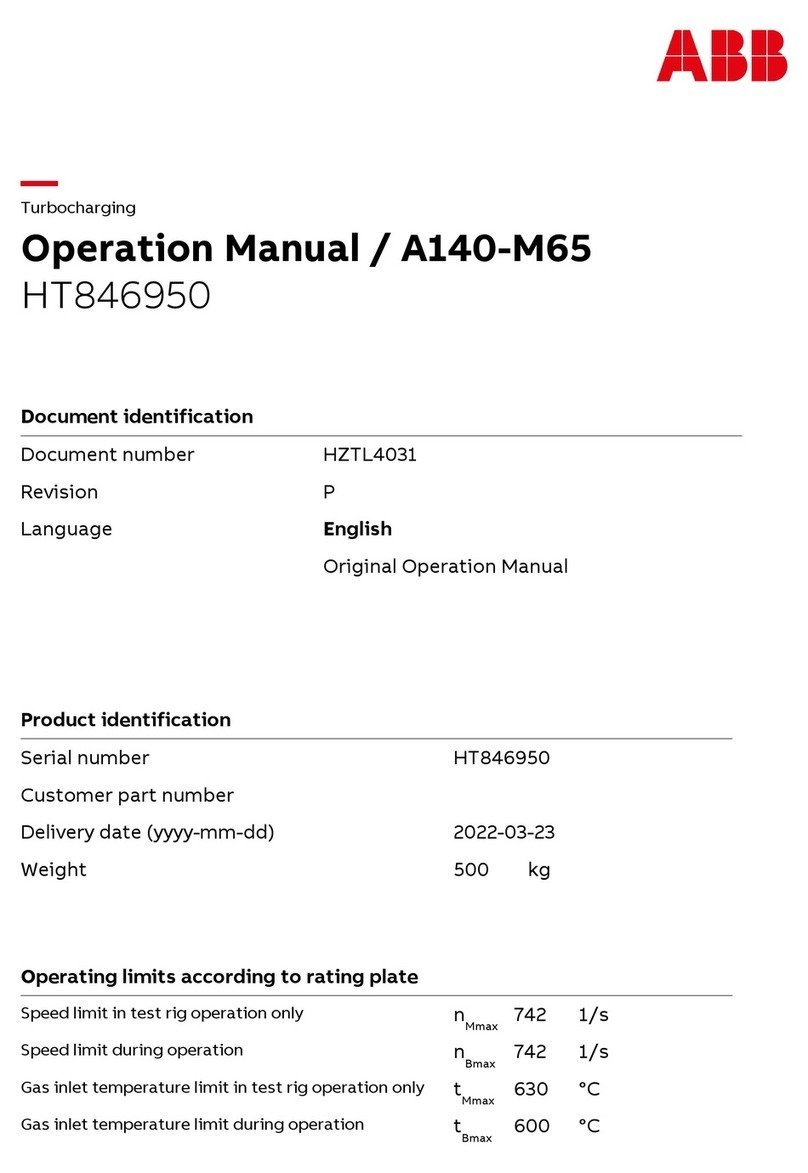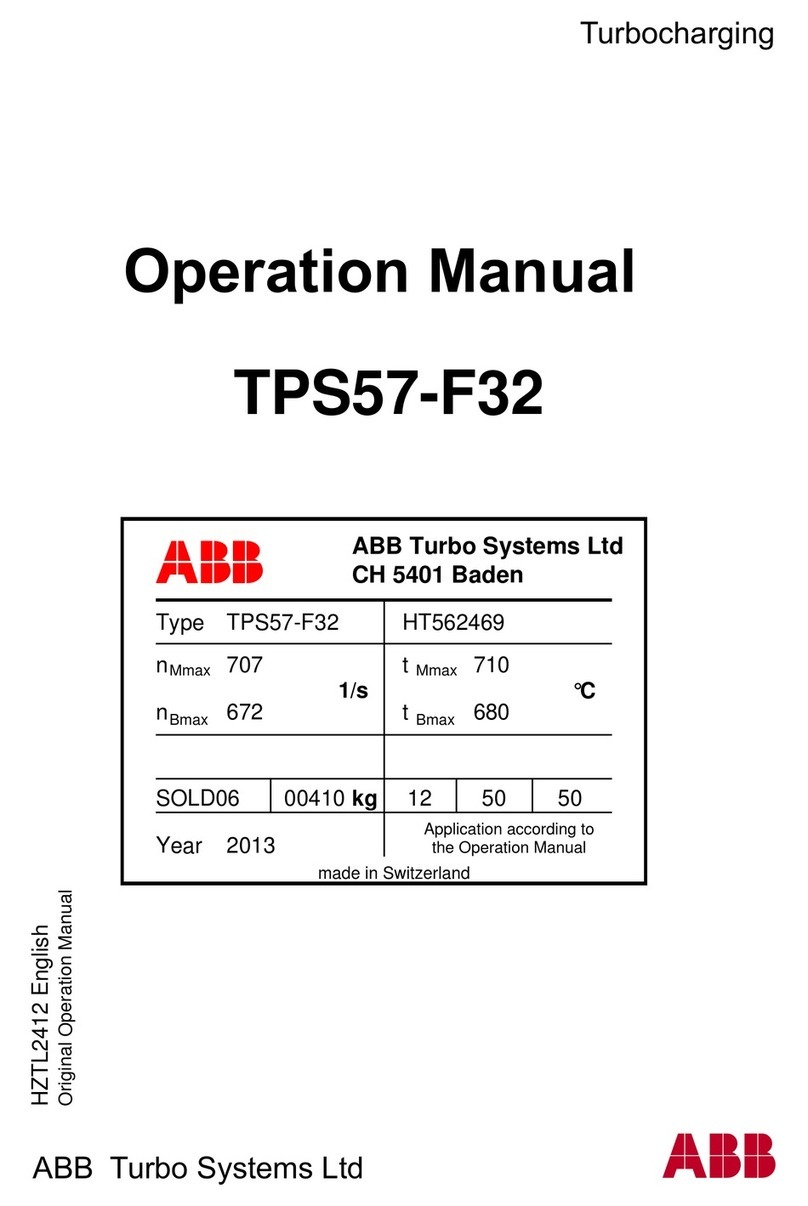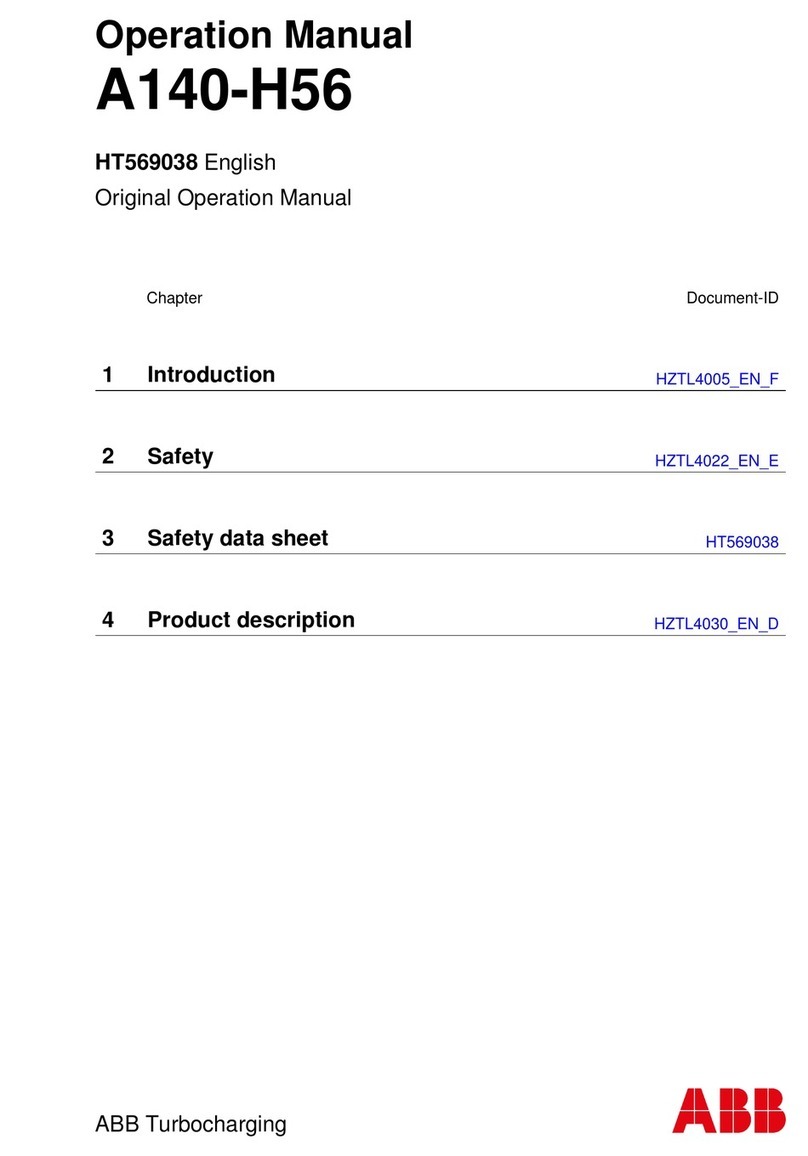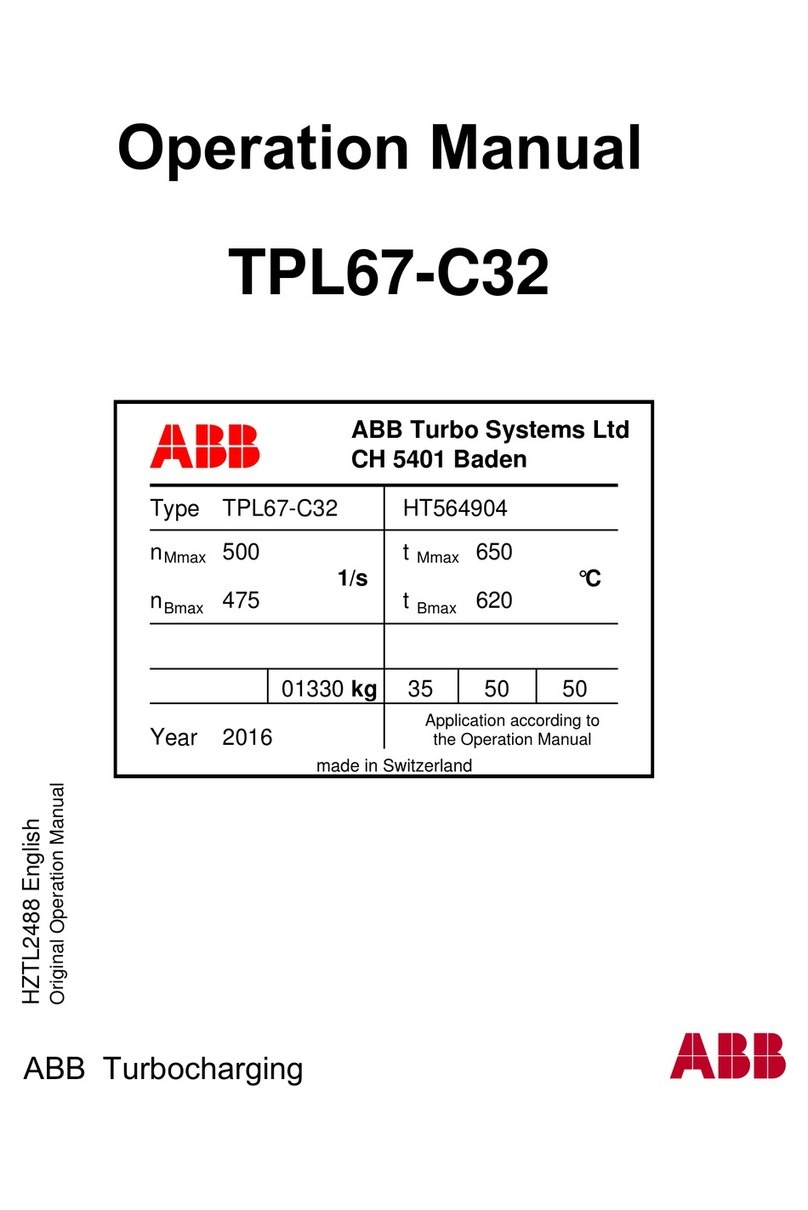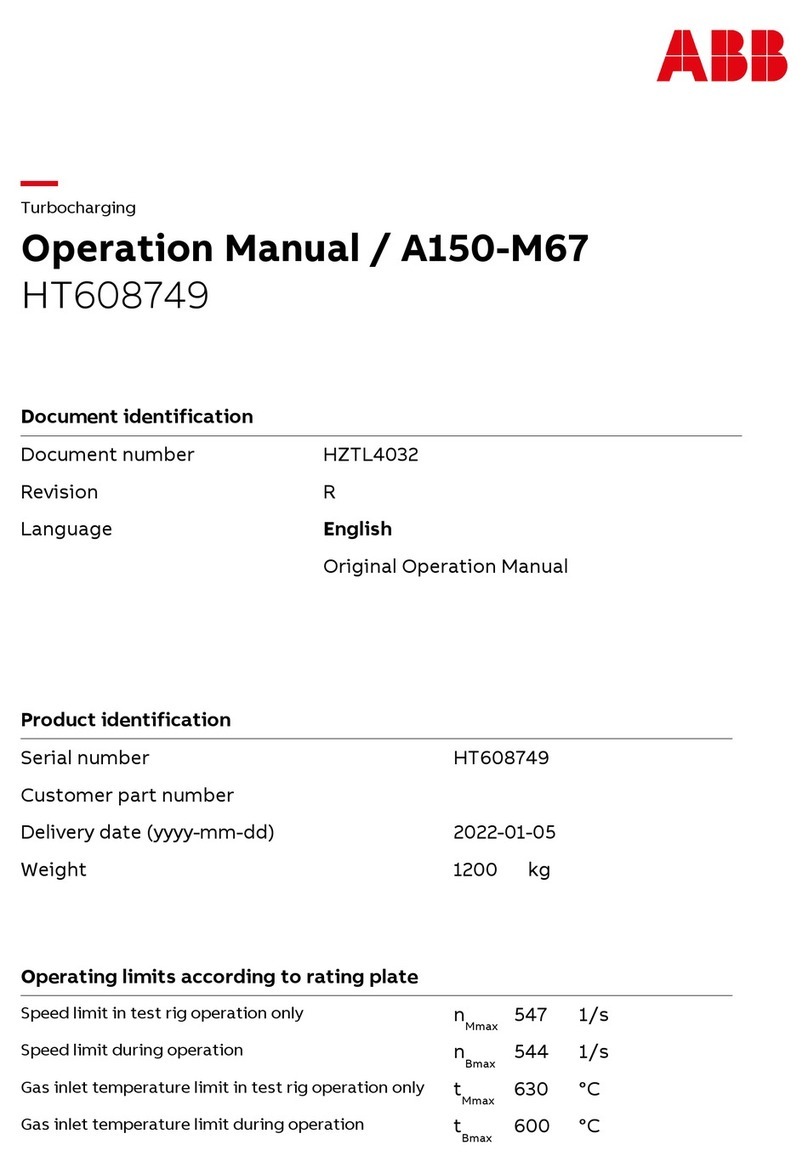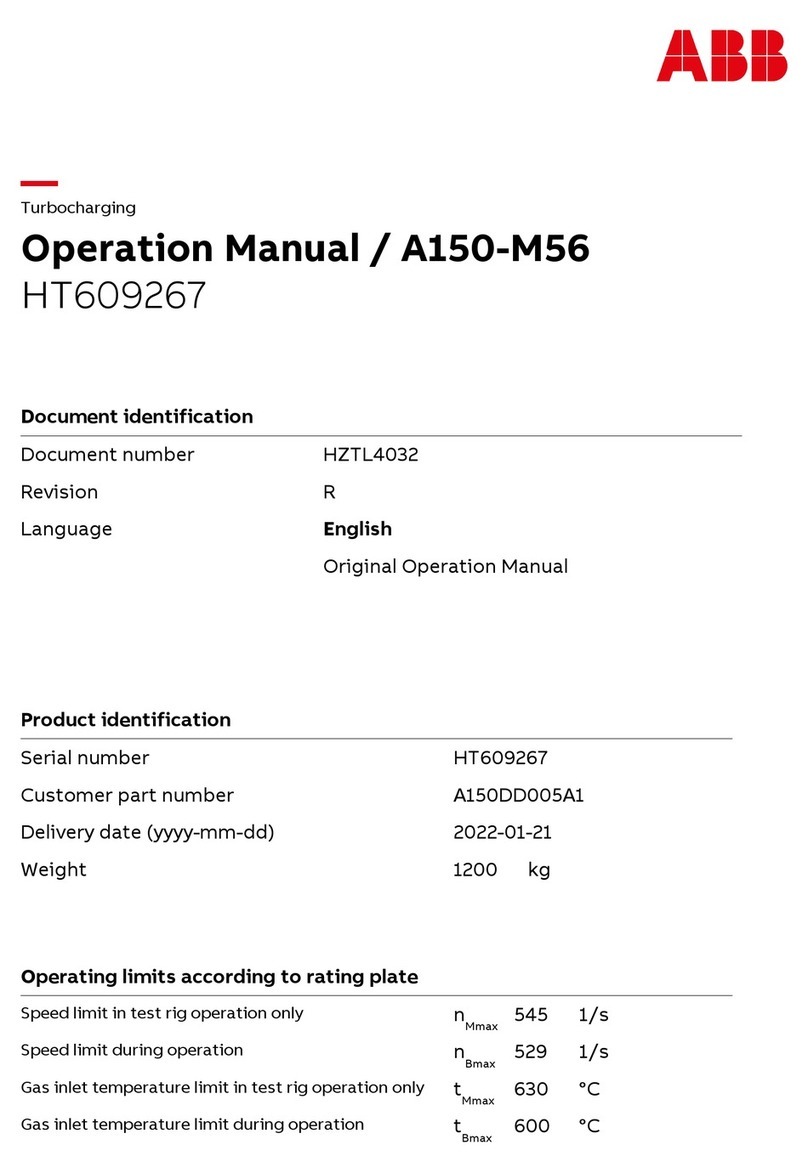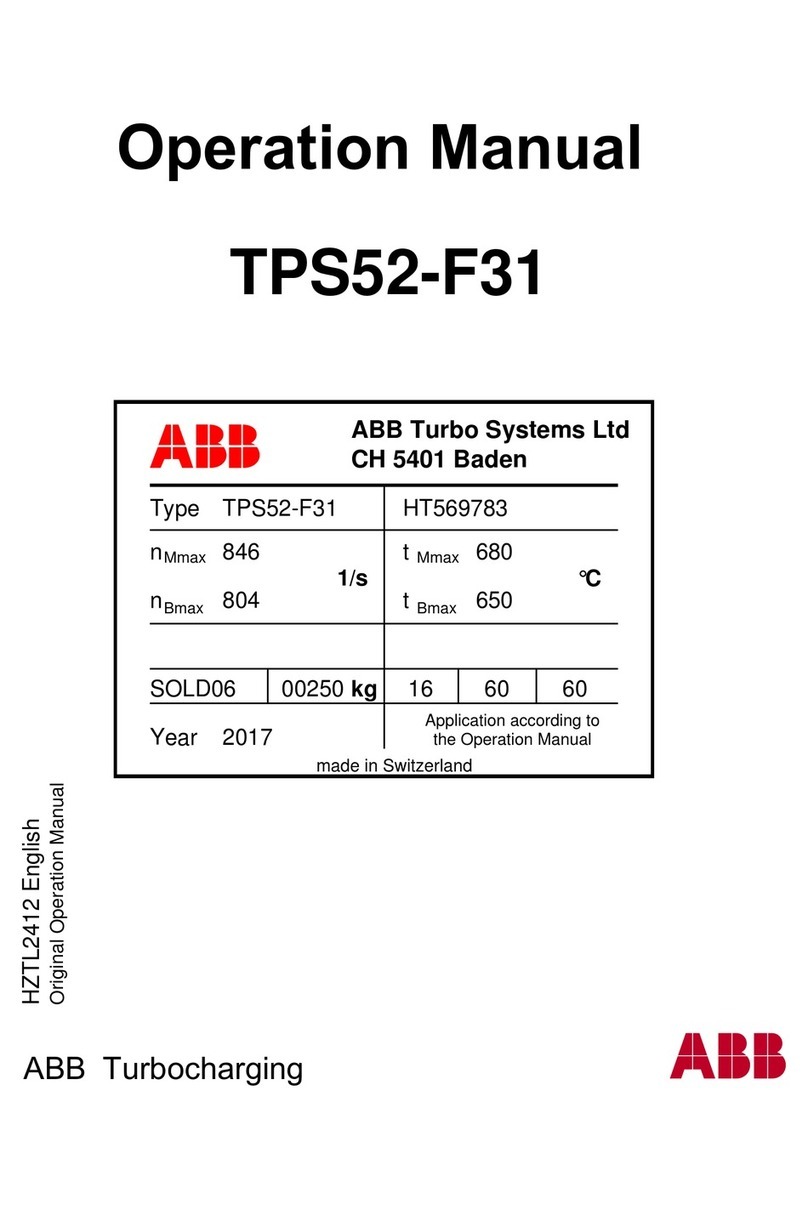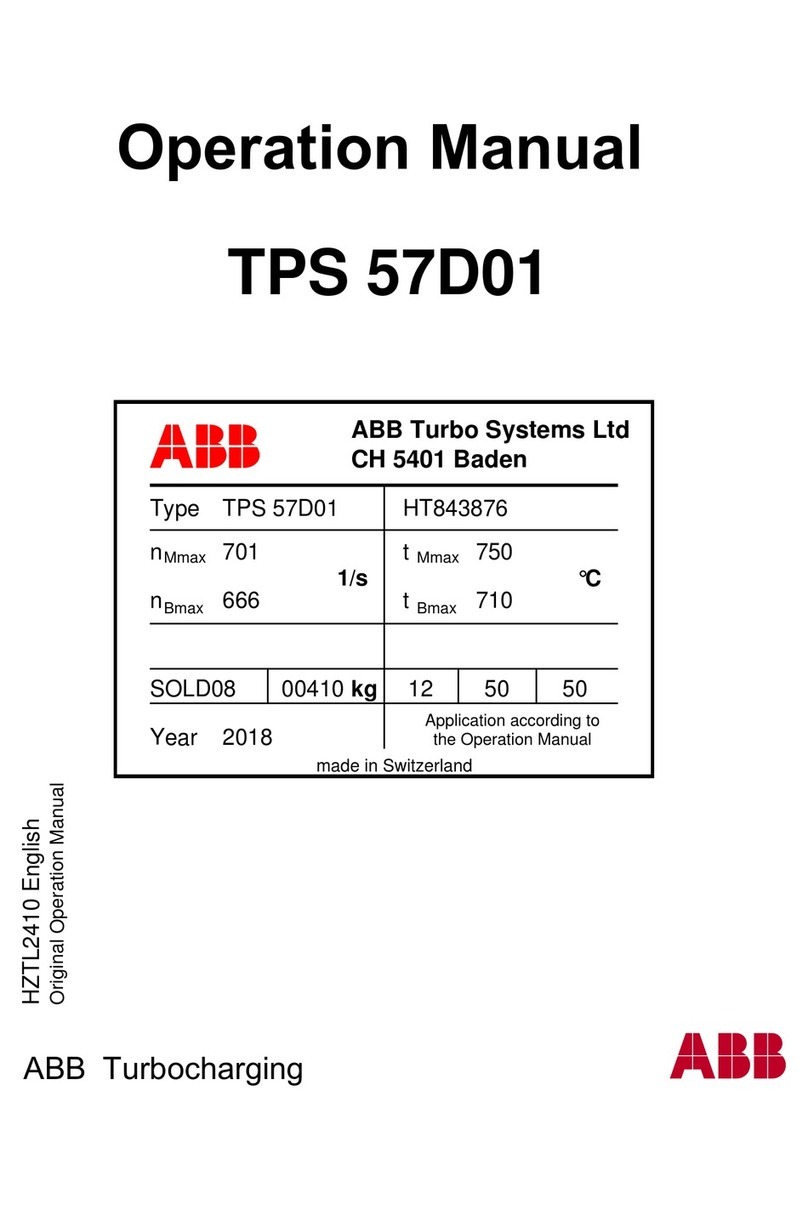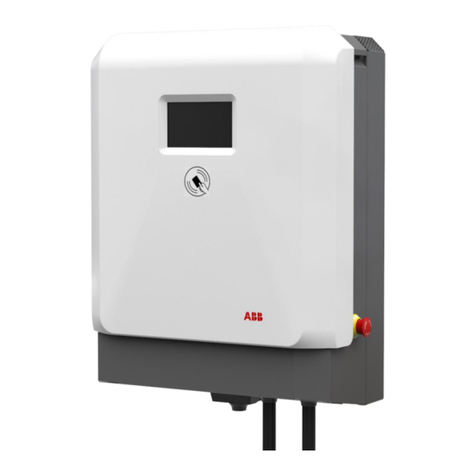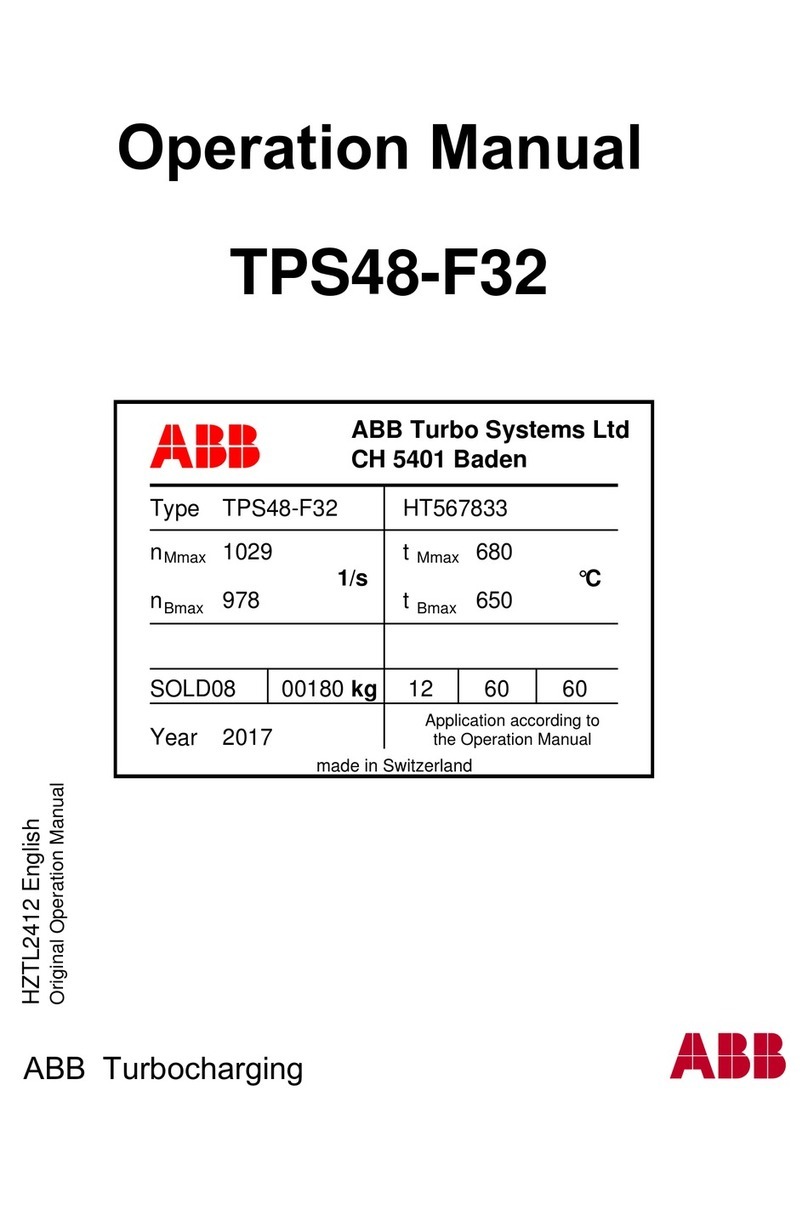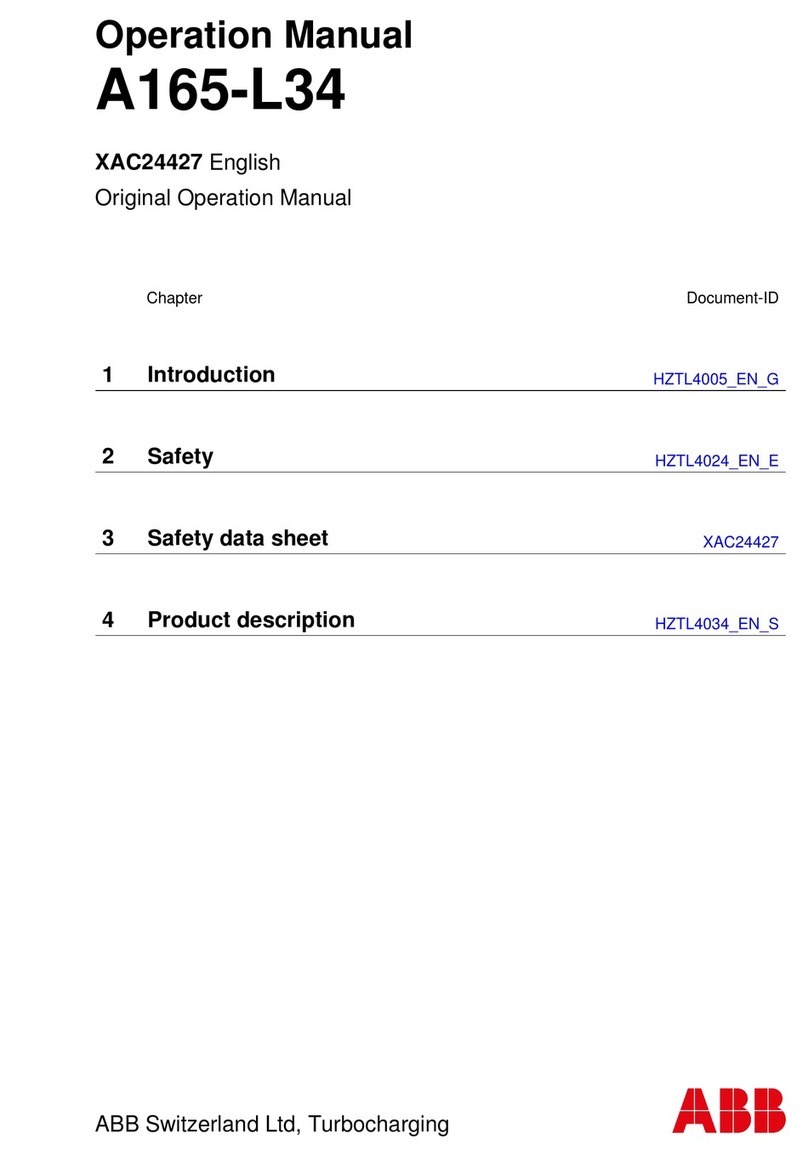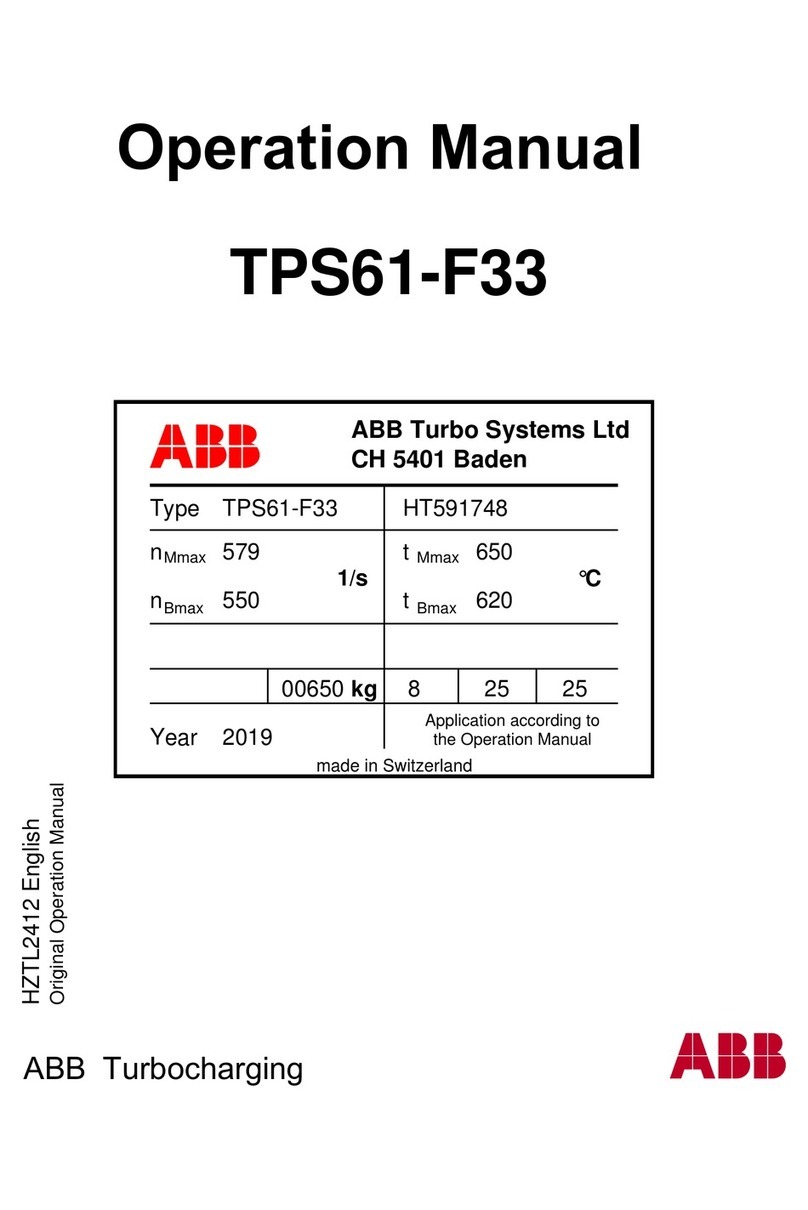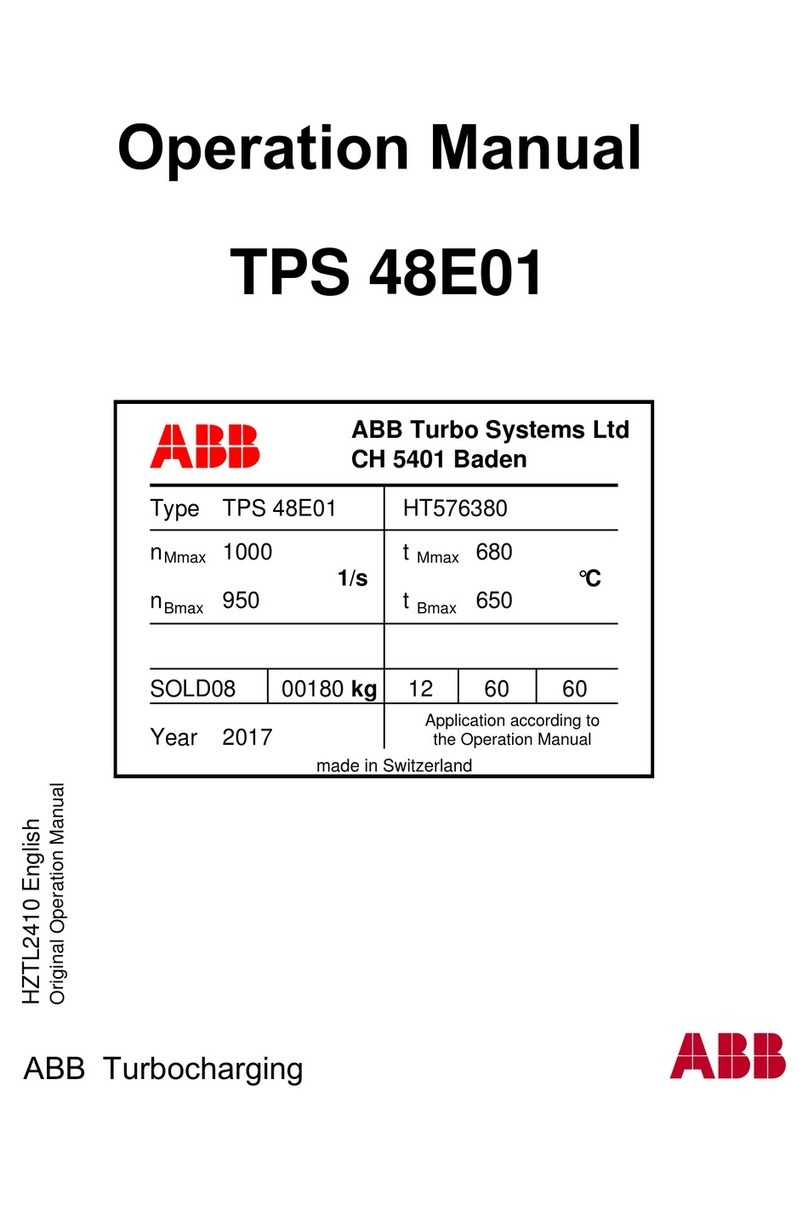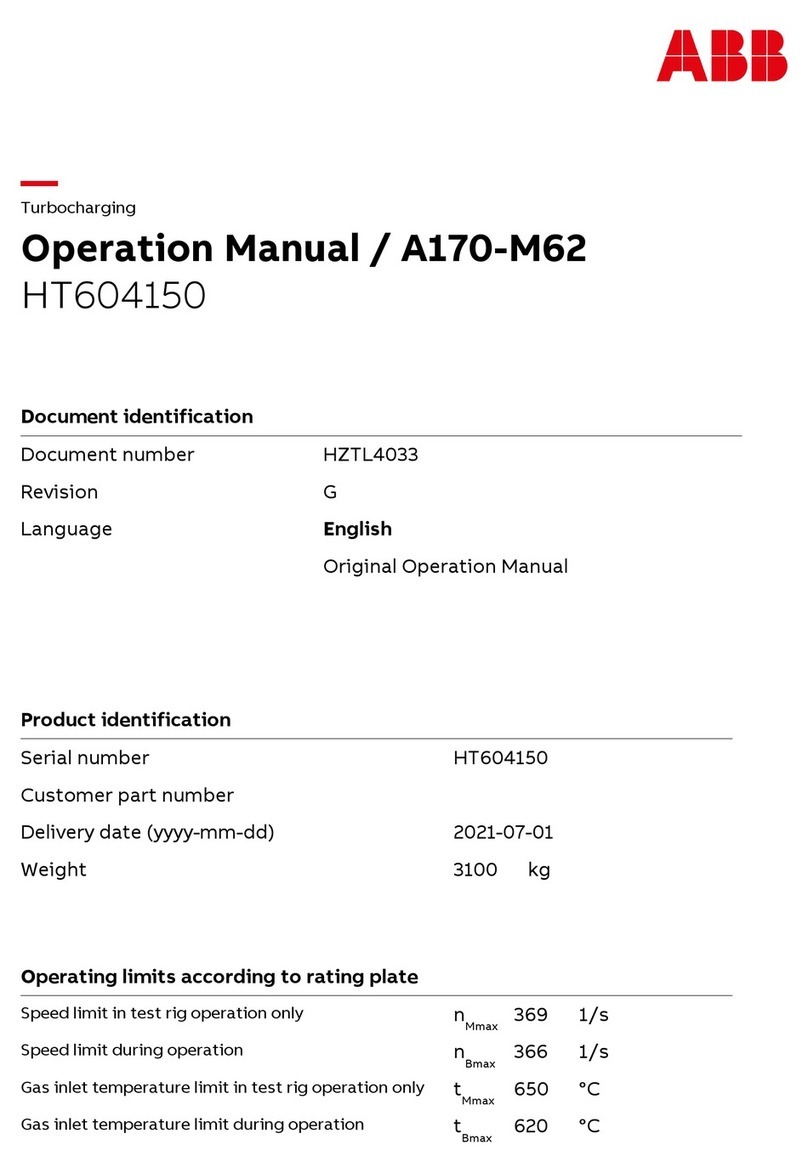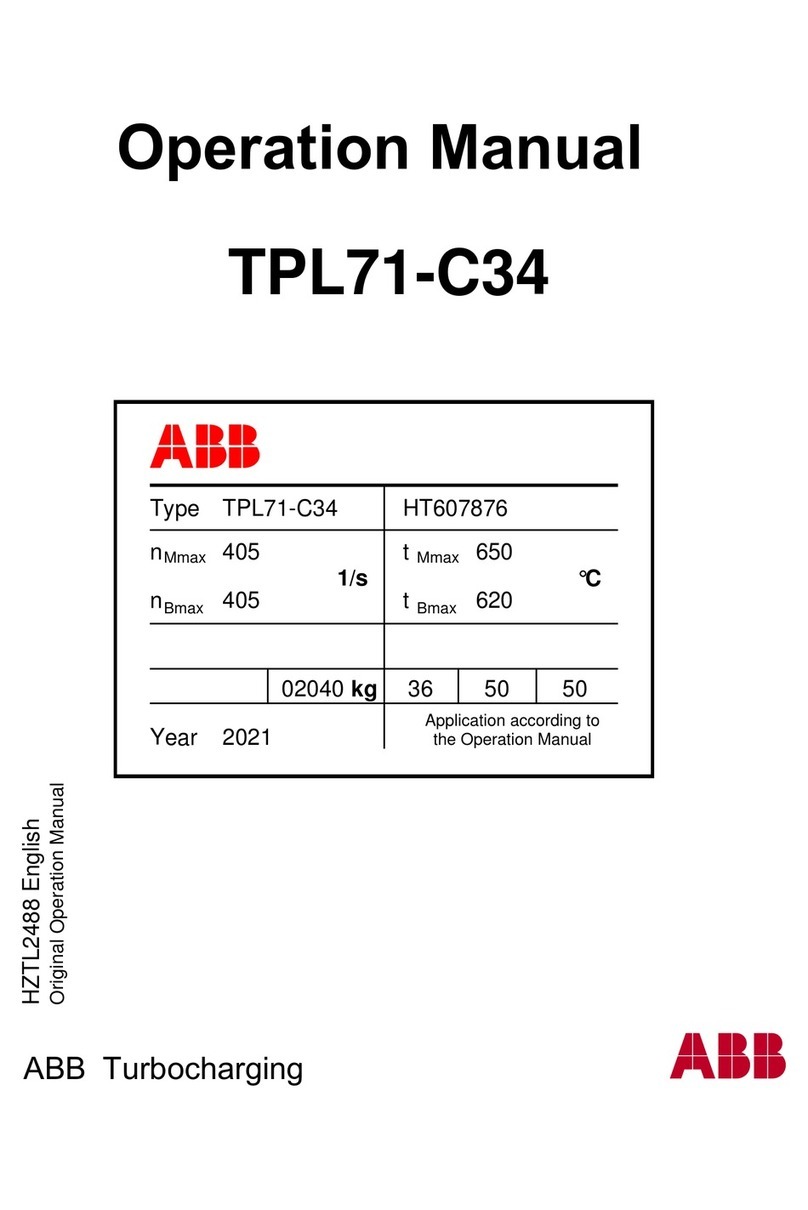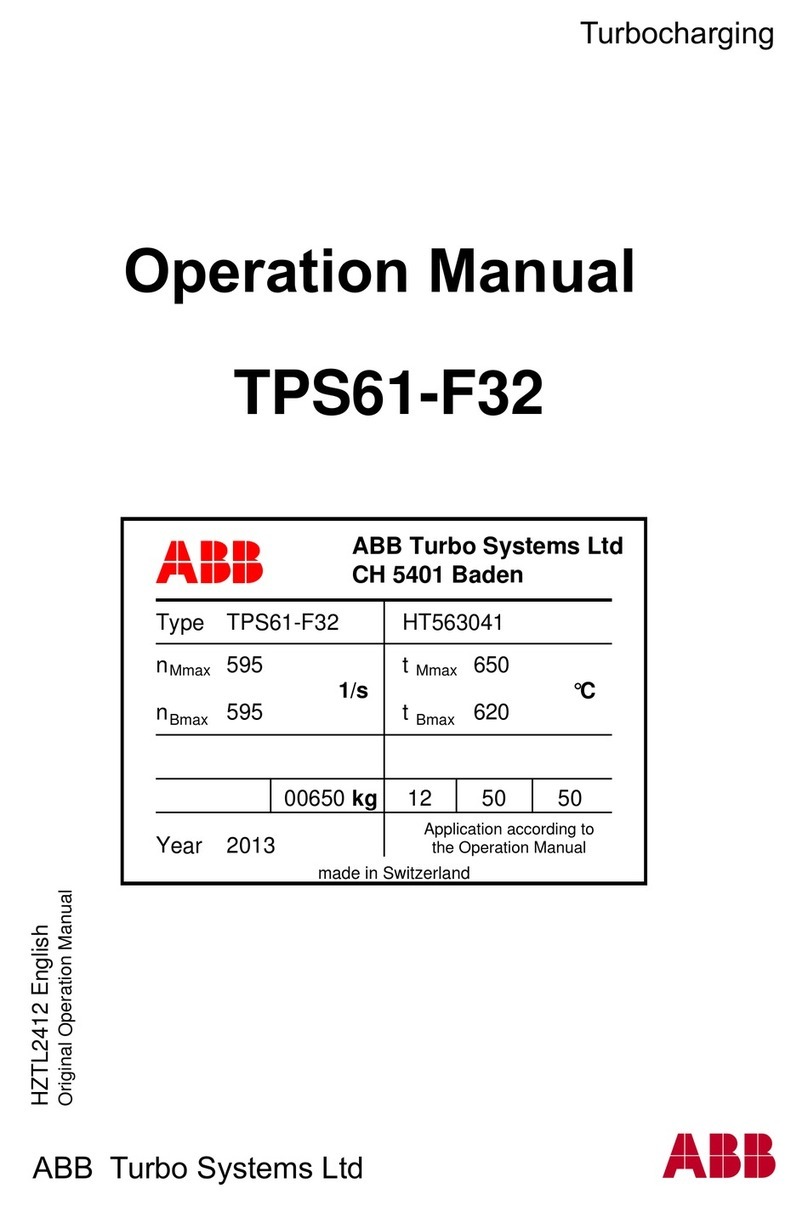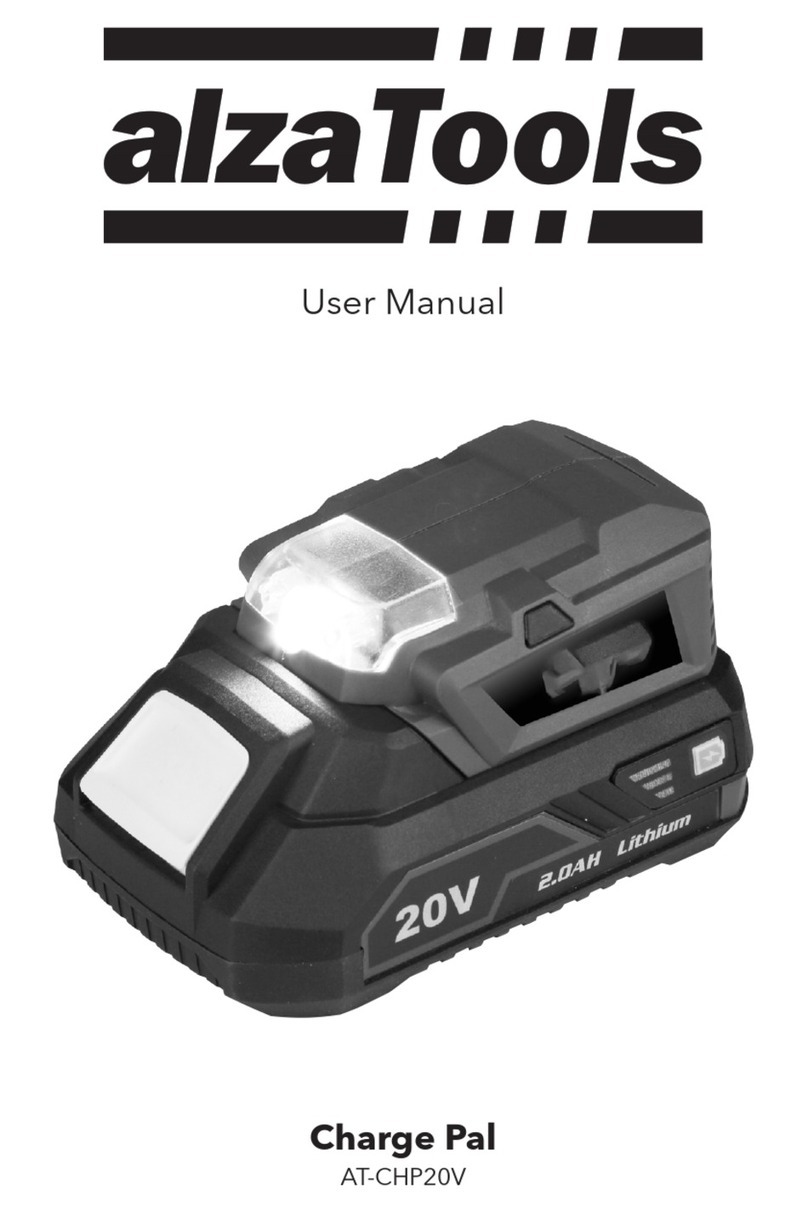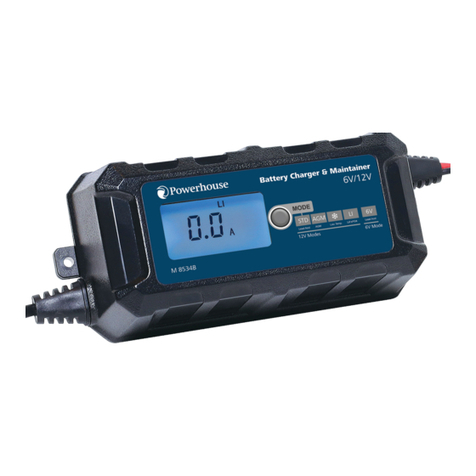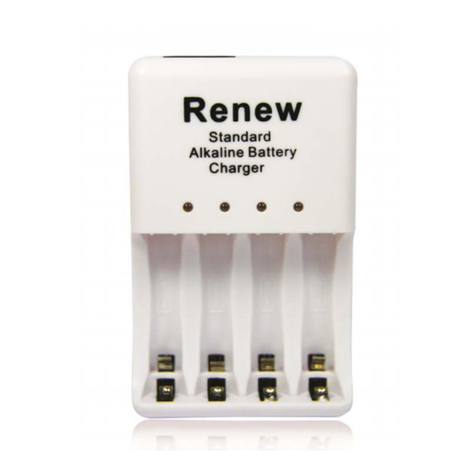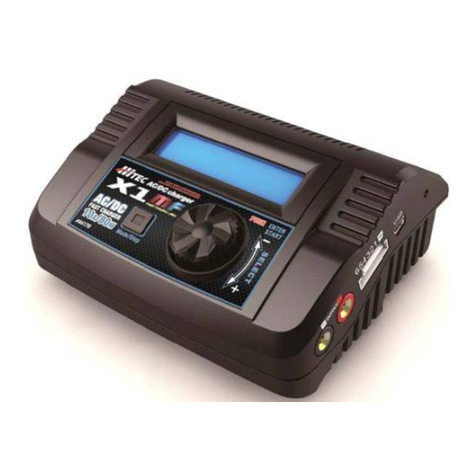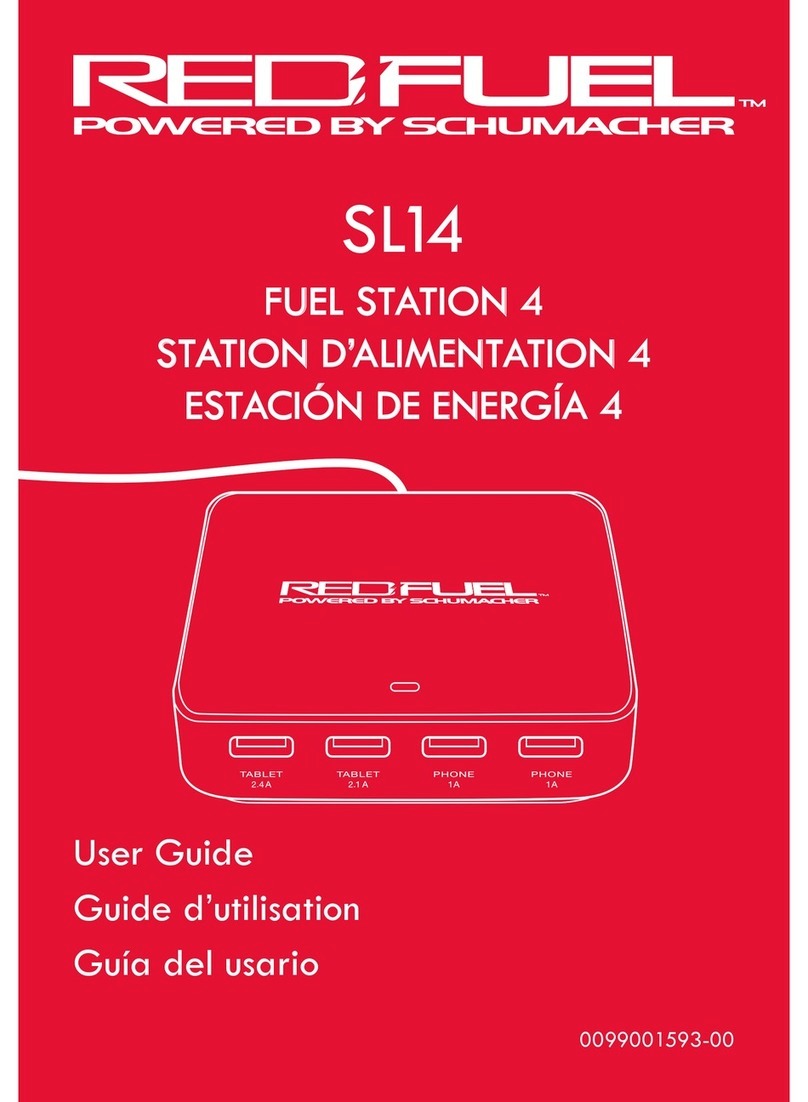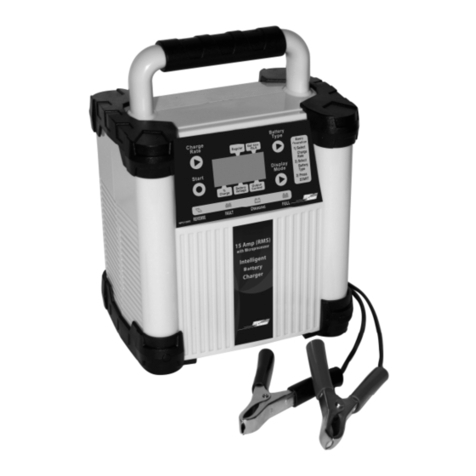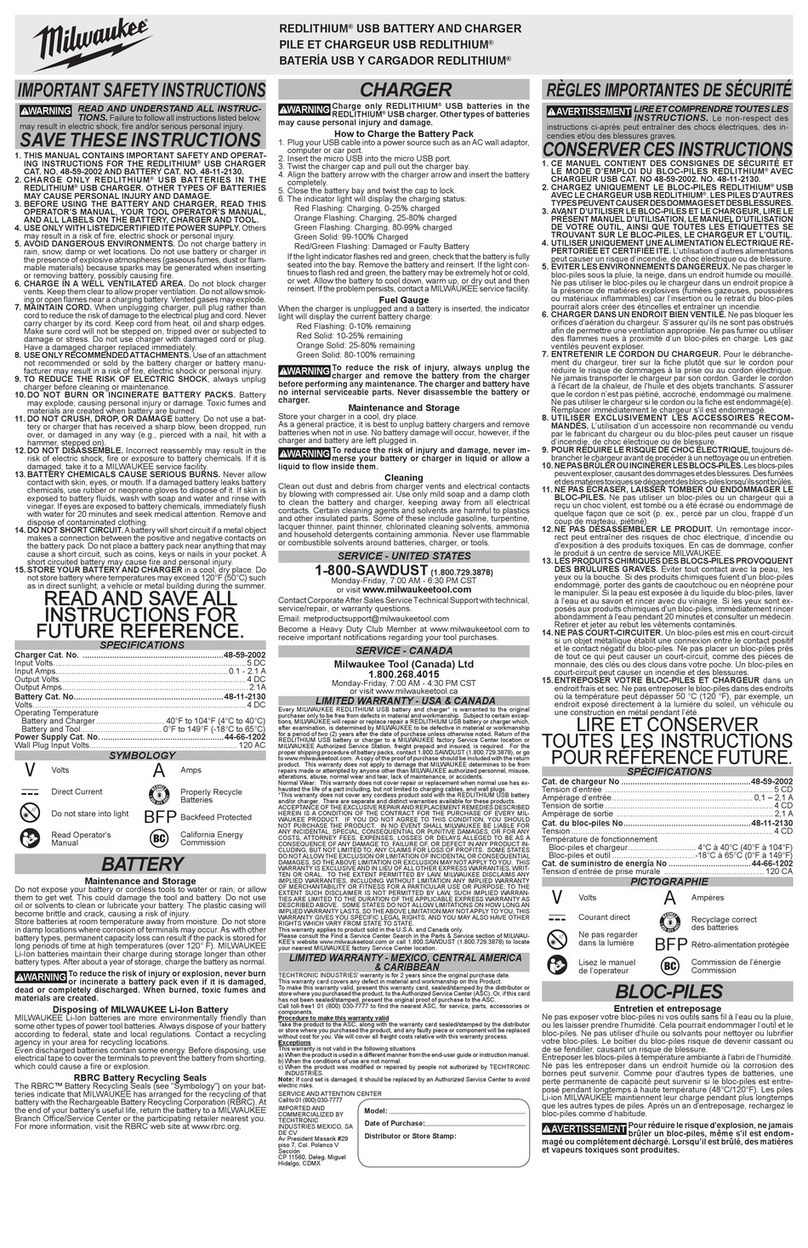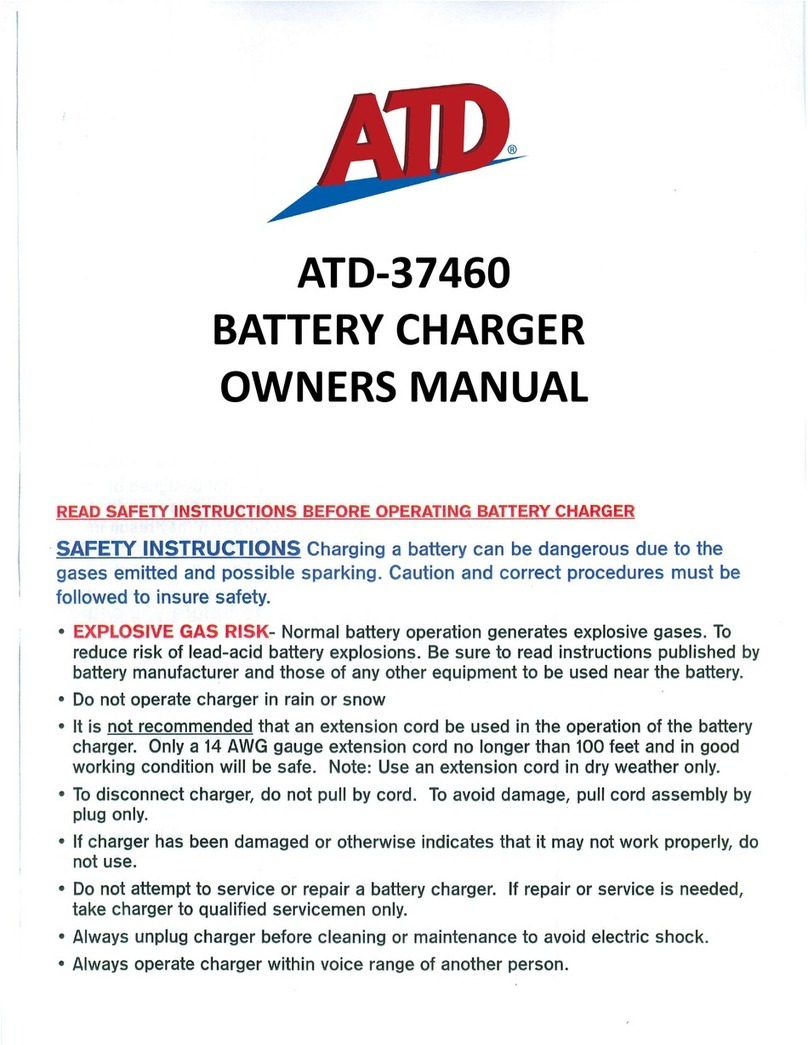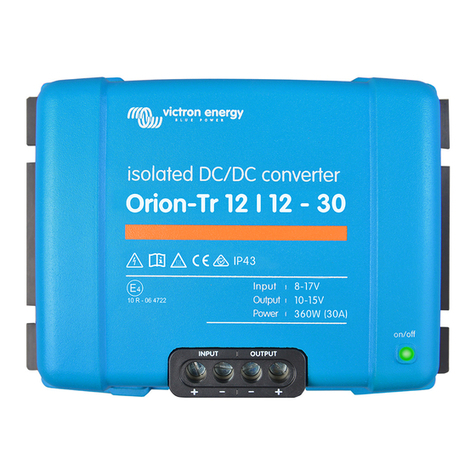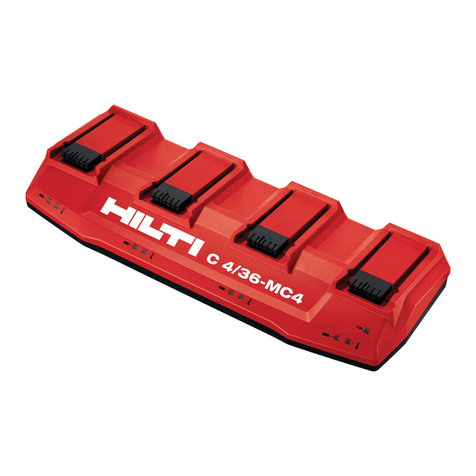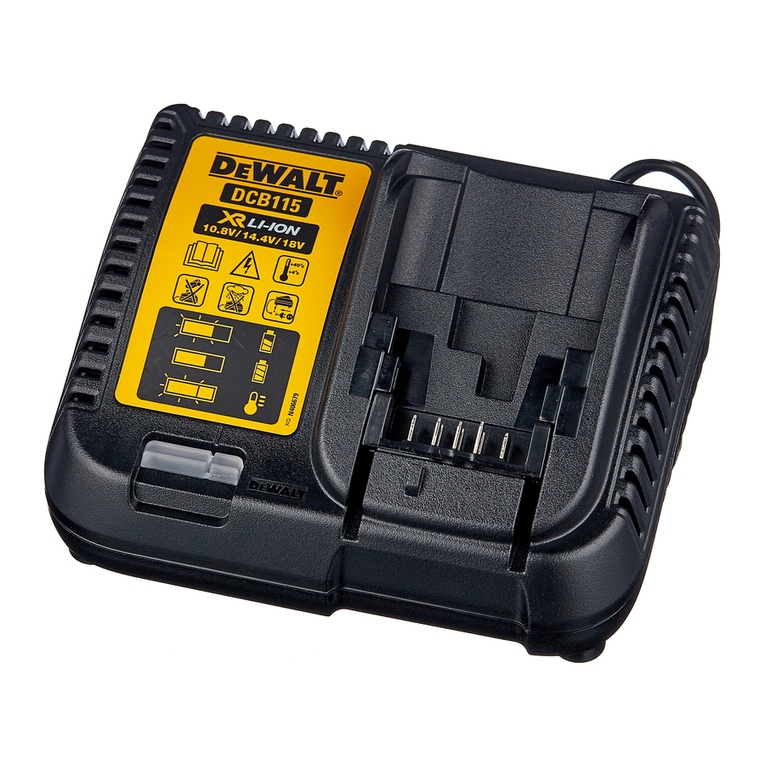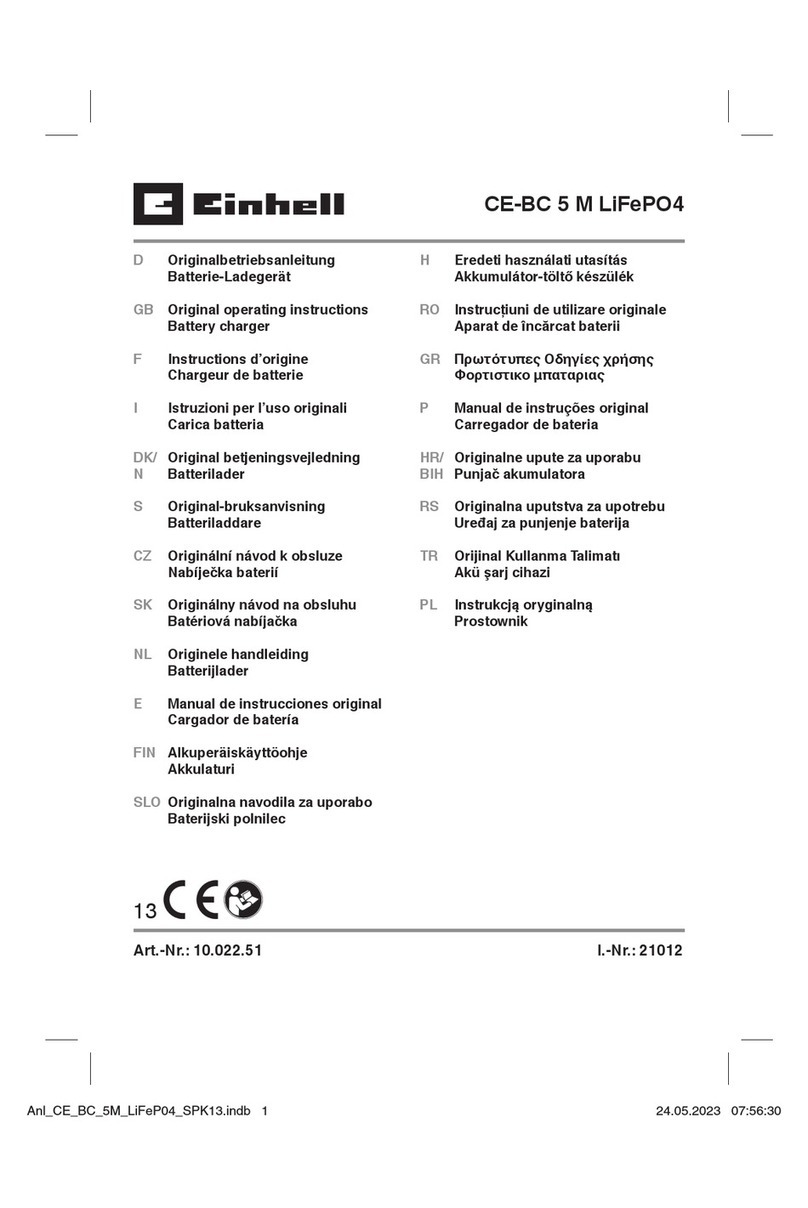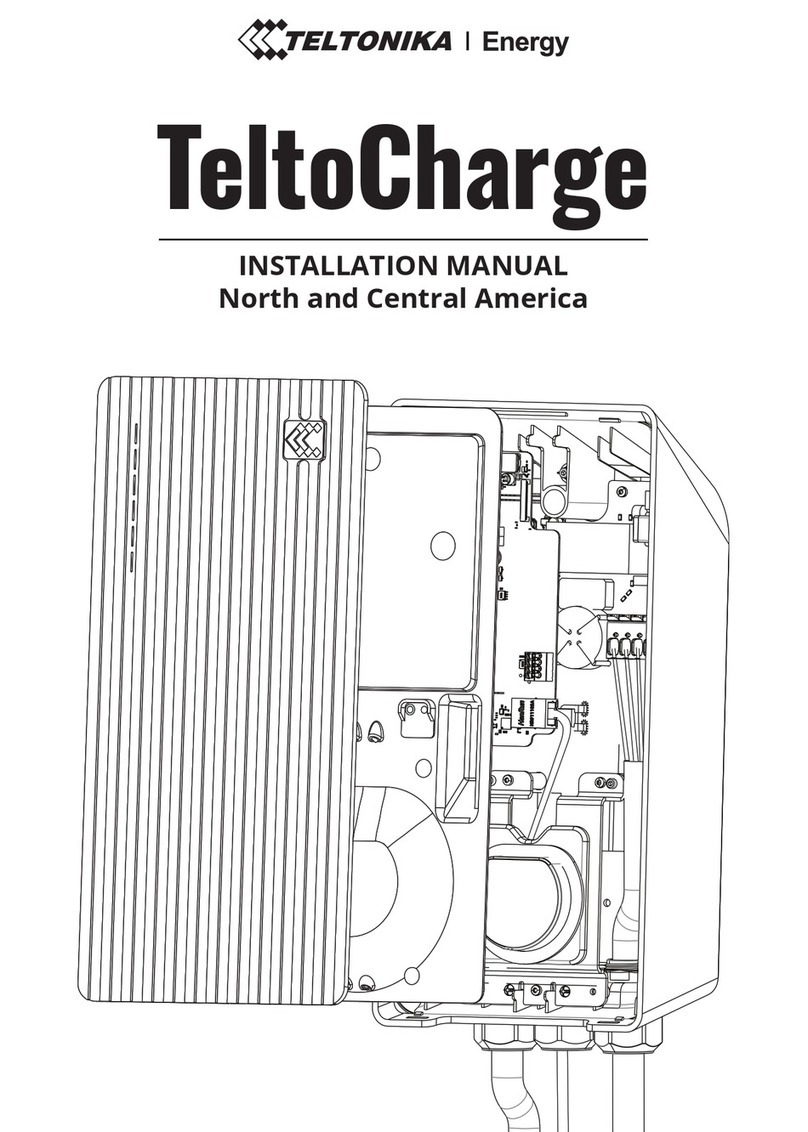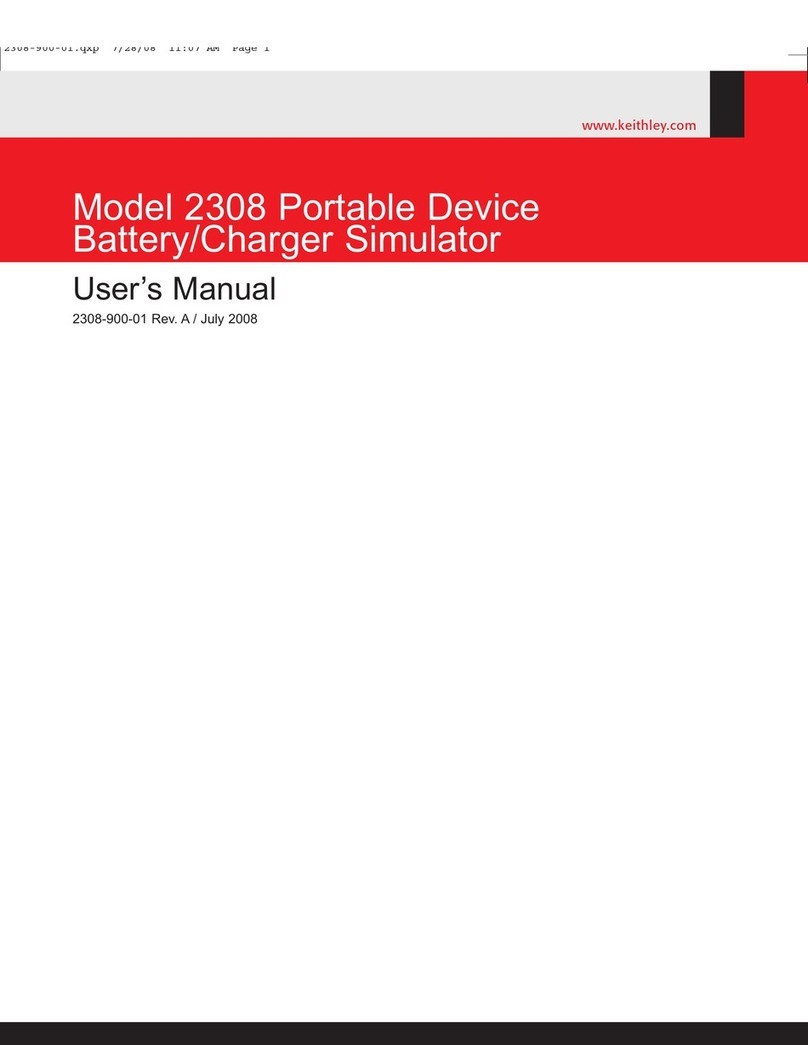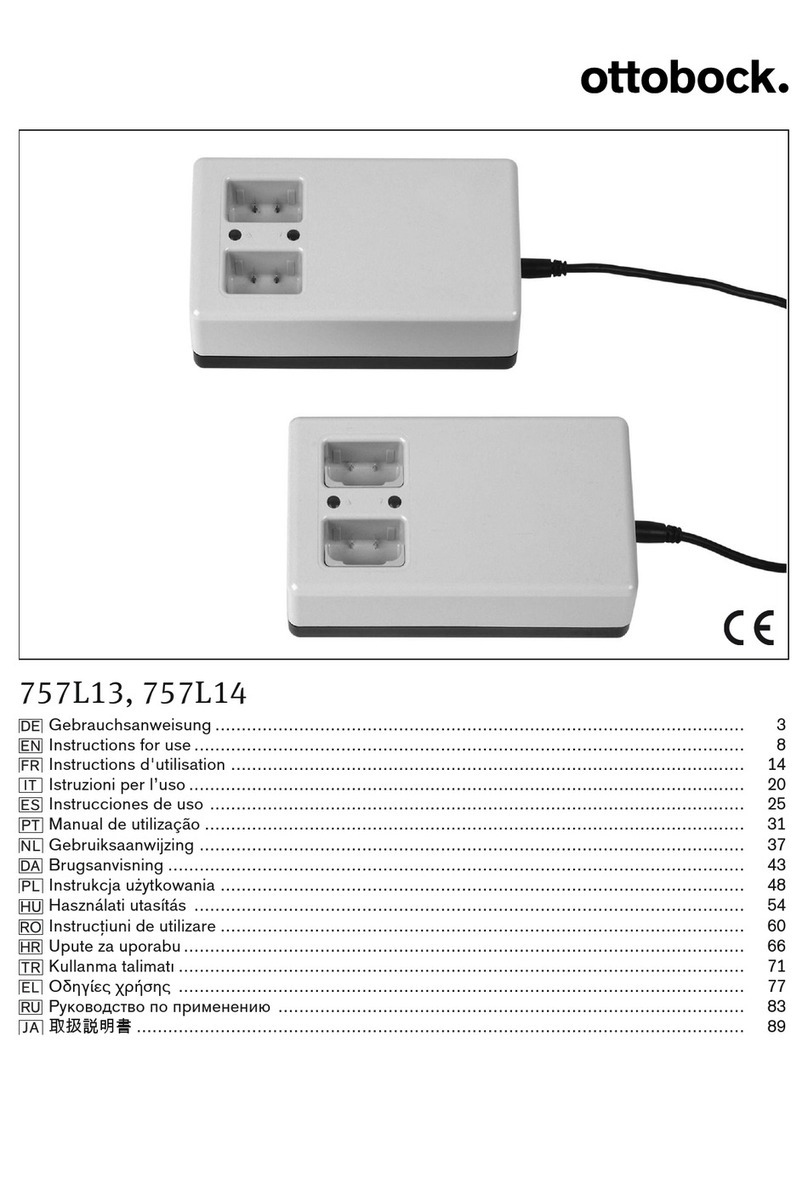ABB ADC-90-200-C1 Specification sheet

Terra 94
All-In-One 90kW DC Fast Charger
Description
This Terra all-in-one DC fast charger offers power up to 90kW. The com-
pact, modular design makes it perfect for retail, highway or fleet use, with
power sharing to further optimize utilization. All Terra chargers feature
connectivity for remote services and OCPP enablement.
Key Benefits and Features
• User friendly control interface allows for PIN or RFID accessibility
• OCPP 1.6 standard supports integration into In-Control, In-Charge’s
EVSE management platform
• LTE Modem and LAN
• TUV Certified
Specifications
• Max Output Voltage: 90kW Max share the same housing
• Available with CCS1, Dual CCS1, and Dual CCS1 & CHAdeMO connectors
• DIN 70121, ISO 15118 protocols supported
• Dimensions (D x W x H): 34.6” x 22.2” x 74.8 x” / 880mm x 565mm x 1900mm
• Weight: 775lbs / 350kg
The Terra 94, 124, 184
share the same housing
Ordering Information
Configuration SKU
Terra 94- Single CCS ADC-90-200-C1
Terra 94- Dual CCS & CHAdeMO ADC-90-200-C1CH
* When ordering the ABB Terra series with CCS/CCS connectors (-CC), order
the -CJ which is designed to handle both CCS and CHAdeMo connector types.

GET IN TOUCH 818.697.GOEV
1433 Fifth Street, Santa Monica, CA 90401
Configuration SKU
Voltage 480 Vac +/- 10 %
AC Input Power Connection 3-phase: L1, L2, L3, GND
Frequency 60 Hz
Recommended breaker 150A
Max Current Draw 115A
Power factor >0.96
THD - Current < 5%
Output Parameters Value
Voltage 150 - 920Vdc
Current - Max 200A
Power - Max 90kW
System Effciency - Max >95
Controls and Interface Value
Charging Connectors CCS1, CHAdeMO
HMI 7” TFT LCD Display
Communication OCPP 1.6J
Network Connection GSM/3G/4G modem; 10/100 Base-T Ethernet
RFID ISO/IEC 14443A/B, Mifare, Calypso
Language English (others available on request)
Environment Value
Temperature - Operating -31 °F to +131 °F */ -35 °C to +55 °C
Temperature - Storage 14 °F to +158 °F / -10 °C to +70 °C
Humidity 5 - 95
Altitude - Operating 6560ft (2000 m)
Protection - Intrusion IP54, NEMA 3R; indoor and outdoor rated
General Value
Cable Length 19.6ft (6 m)
Safety and EMI UL 2202, NEC Article 625, EN 61851, EN 62196
* Derating characteristics apply at extreme temperatures
Technical Specifications

Operation and installation manual
Terra 94/104/124/184 North America
© Copyright 2022 ABB. All rights reserved

Copyright
All rights to copyrights, registered trademarks, and trademarks reside with their respective
owners.
Copyright ® ABB EV Infrastructure. All rights reserved.
29AKK108466A3703-EN | 001

Contents
1 About this document.......................................................................... 8
1.1 Function of this document...................................................................................................... 8
1.2 Target group...............................................................................................................................8
1.3 Revision history..........................................................................................................................8
1.4 Language.....................................................................................................................................8
1.5 Illustrations.................................................................................................................................8
1.6 Units of measurement..............................................................................................................8
1.7 Typographical conventions..................................................................................................... 9
1.8 How to use this document...................................................................................................... 9
1.9 General symbols and signal words........................................................................................ 9
1.10 Special symbols for warnings and dangers....................................................................... 10
1.11 Related documents.................................................................................................................. 11
1.12 Manufacturer and contact data............................................................................................ 11
1.13 Abbreviations............................................................................................................................11
1.14 Terminology.............................................................................................................................. 12
1.15 Orientation agreements.........................................................................................................13
2 Safety.................................................................................................. 14
2.1 Liability...................................................................................................................................... 14
2.2 General safety instructions................................................................................................... 14
2.3 Responsibilities for the owner..............................................................................................14
2.4 Required qualifications for the installation engineer.......................................................15
2.5 Personal protective equipment............................................................................................ 15
2.6 Safety instructions during installation................................................................................15
2.7 Safety instructions during transport...................................................................................16
2.8 Safety instructions for earthing........................................................................................... 16
2.9 Safety instructions for use.................................................................................................... 16
2.10 Signs on the EVSE.................................................................................................................... 17
2.11 Discard the EVSE or parts of the EVSE................................................................................ 17
2.12 Cyber security...........................................................................................................................18
3 Description......................................................................................... 19
3.1 Type plate.................................................................................................................................. 19
3.2 Intended use............................................................................................................................. 19
3.3 Working principles................................................................................................................... 21
3.3.1 Terra x4 variants CC and CJ...................................................................................21
3.3.2 Terra x4 variant C.................................................................................................... 23
3.4 Overview....................................................................................................................................24
3.4.1 Overview of the system......................................................................................... 24
Contents
9AKK108466A3703-EN | 001 3

3.4.2 Overview of the EVSE, outside............................................................................. 25
3.4.3 Overview of the EVSE, inside................................................................................ 26
3.4.4 Overview of the cable glands of the charge post............................................. 27
3.4.5 Overview of the installed EVSE............................................................................ 28
3.4.6 Overview of the cable management system (option)..................................... 28
3.5 Authorization to charge......................................................................................................... 29
3.6 Payment terminal.................................................................................................................... 29
3.7 Options......................................................................................................................................29
3.7.1 EV charge cable, CCS 1........................................................................................... 29
3.7.2 EV charge cable, CCS 2...........................................................................................30
3.7.3 EV charge cable, CHAdeMO.................................................................................. 30
3.7.4 Integrated payment terminal............................................................................... 30
3.7.5 Cable management system.................................................................................. 30
3.7.6 Tilt sensors............................................................................................................... 31
3.8 Power allocation strategies...................................................................................................32
3.8.1 Sequential power allocation................................................................................. 32
3.8.2 Concurrent power allocation................................................................................ 33
3.8.3 Dynamic allocation 'First In First Served'........................................................... 33
3.8.4 Dynamic power allocation 'Fair Share'................................................................34
3.9 External residual-current device...........................................................................................34
3.10 Description of the touchscreen............................................................................................35
3.10.1 General description of the layout........................................................................ 35
3.10.2 General description of the buttons.....................................................................36
3.11 Local Service Portal................................................................................................................. 36
3.12 Cloud service portal.................................................................................................................37
4 Inspection and transport................................................................. 38
4.1 Transport the EVSE to the site............................................................................................. 38
4.2 Unpacking................................................................................................................................. 38
4.2.1 Unpacking procedure.............................................................................................38
4.2.2 Do a check on the transport sensors.................................................................. 38
4.2.3 Remove the cabinet from the pallet....................................................................39
4.3 Transport the EVSE on the site.............................................................................................39
4.3.1 Hoist the cabinet.....................................................................................................39
4.3.2 Move the cabinet with a forklift truck................................................................ 40
5 Installation......................................................................................... 42
5.1 General installation procedure............................................................................................. 42
5.2 Site preparation.......................................................................................................................42
5.2.1 Prepare the site....................................................................................................... 42
5.2.2 Control the space and airflow around the cabinet.......................................... 43
5.3 Prepare the foundation..........................................................................................................44
5.3.1 Prepare the foundation - general procedure.................................................... 44
5.3.2 Prepare a casted foundation................................................................................44
Contents
49AKK108466A3703-EN | 001

5.3.3 Prepare a standard prefabricated foundation................................................. 44
5.4 Replace the standard base with an alternative base....................................................... 45
5.4.1 Remove the EVSE from the base......................................................................... 46
5.4.2 Install a base with side entrance......................................................................... 46
5.4.3 Install a base with reduced height.......................................................................47
5.5 Mechanical installation...........................................................................................................47
5.5.1 Mechanical installation procedure...................................................................... 47
5.5.2 Open the cable inlet and remove the cable gland............................................48
5.5.3 Guide the cables through the opening in the cable guide plate................... 48
5.5.4 Install the cabinet on the foundation................................................................. 48
5.6 Electrical installation.............................................................................................................. 49
5.6.1 Electrical installation procedure..........................................................................49
5.6.2 Connect the PE wire............................................................................................... 49
5.6.3 Connect the enclosure to the earth.................................................................... 50
5.6.4 Connect the AC input wires...................................................................................51
5.6.5 Connect the Ethernet cable...................................................................................51
5.7 Tilt sensors installation (option).......................................................................................... 52
5.7.1 General procedure.................................................................................................. 52
5.7.2 Install the bracket of the tilt sensors..................................................................52
5.7.3 Install the tilt sensors.............................................................................................53
5.7.4 Connect the tilt sensors........................................................................................ 53
5.7.5 Install a ferrule on a wire....................................................................................... 54
5.7.6 Connect a wire that has a ferrule.........................................................................54
5.8 Cable management system installation (option)............................................................. 55
5.8.1 Prepare the cable management system.............................................................55
5.8.2 Mount the clamp..................................................................................................... 56
5.8.3 Install the cable management system................................................................56
5.9 Prepare for commissioning...................................................................................................56
6 Operation........................................................................................... 58
6.1 Prepare before use..................................................................................................................58
6.2 Stop the EVSE if there is an emergency..............................................................................58
6.3 Reset the EVSE after an emergency.................................................................................... 59
6.4 Charge session.........................................................................................................................59
6.4.1 Charge an EV............................................................................................................59
6.4.2 Start a charge session........................................................................................... 59
6.4.3 Stop a charge session............................................................................................60
6.5 Energize the EVSE................................................................................................................... 60
6.6 De-energize the EVSE............................................................................................................. 60
6.6.1 De-energize the EVSE - general procedure........................................................60
6.6.2 Measure the AC voltage......................................................................................... 61
6.6.3 Measure the DC voltage......................................................................................... 61
6.7 Remove condensation from the cabinet............................................................................ 62
6.8 Local service portal operations............................................................................................ 63
Contents
9AKK108466A3703-EN | 001 5

6.8.1 Start the local service portal.................................................................................63
6.8.2 Set the configuration parameters.......................................................................63
6.8.3 Set the OCPP parameters......................................................................................63
6.8.4 Install new software...............................................................................................64
6.8.5 Close the local service portal................................................................................64
7 Maintenance and cleaning................................................................65
7.1 Maintenance schedule............................................................................................................65
7.2 Clean the cabinet.....................................................................................................................65
7.3 Do a visual check of the EVSE............................................................................................... 66
7.4 Replace the air inlet filter.......................................................................................................66
7.5 Replace the air outlet filter.................................................................................................... 67
8 Access to parts.................................................................................. 69
8.1 Open the doors........................................................................................................................ 69
8.2 Close the doors........................................................................................................................69
8.3 Remove the border covers.....................................................................................................70
8.4 Install the border covers.........................................................................................................71
9 Troubleshooting................................................................................ 72
9.1 Troubleshooting procedure...................................................................................................72
9.2 Troubleshooting table............................................................................................................ 72
10 Technical data.................................................................................... 73
10.1 EVSE type...................................................................................................................................73
10.2 General specifications............................................................................................................ 73
10.3 Parts included in the delivery................................................................................................ 74
10.4 Transport specifications........................................................................................................74
10.5 Required tools for installation.............................................................................................. 75
10.6 Required parts for installation..............................................................................................75
10.7 Torque specifications............................................................................................................. 76
10.8 Operating conditions..............................................................................................................76
10.9 Noise level................................................................................................................................. 76
10.10 Tilt sensor specifications.......................................................................................................76
10.10.1 General specifications............................................................................................76
10.10.2 Wire specifications..................................................................................................77
10.10.3 Wiring diagram for the tilt sensors..................................................................... 77
10.10.4 The alternative base with reduced height ........................................................ 78
10.11 Cable management system specifications........................................................................ 79
10.12 Dimensions...............................................................................................................................80
10.12.1 General dimensions................................................................................................80
10.12.2 Packaged product.................................................................................................. 80
Contents
69AKK108466A3703-EN | 001

10.12.3 Mass of the EVSE (without packaging material).............................................. 81
10.12.4 Center of gravity......................................................................................................81
10.12.5 Floor space requirements..................................................................................... 82
10.12.6 Casted foundation..................................................................................................83
10.12.7 Prefabricated foundation..................................................................................... 84
10.12.8 Alternative base with side entrance....................................................................85
10.12.9 Cable slack................................................................................................................86
10.12.10 Height of user operable elements.......................................................................86
10.13 Communication interface specifications........................................................................... 87
10.14 EVSE power rating.................................................................................................................. 88
10.14.1 EVSE rating during normal duty operation....................................................... 88
10.14.2 EVSE derating during normal duty operation...................................................88
10.14.3 EVSE rating in heavy duty operation.................................................................. 88
10.14.4 EVSE derating in heavy duty operation..............................................................88
10.15 Harmonics on the grid............................................................................................................89
10.15.1 Terra 184................................................................................................................... 89
10.15.2 Terra 124 and 104.................................................................................................... 91
10.15.3 Terra 94..................................................................................................................... 92
10.16 AC input specifications..........................................................................................................94
10.16.1 General AC input specifications.......................................................................... 94
10.16.2 AC input wires..........................................................................................................95
10.16.3 Terra 94.....................................................................................................................95
10.16.4 Terra 104...................................................................................................................95
10.16.5 Terra 124................................................................................................................... 96
10.16.6 Terra 184................................................................................................................... 96
10.17 DC output specifications.......................................................................................................96
10.17.1 General specifications........................................................................................... 96
10.17.2 Terra 94..................................................................................................................... 97
10.17.3 Terra 104...................................................................................................................98
10.17.4 Terra 124................................................................................................................. 102
10.17.5 Terra 184................................................................................................................. 106
10.18 Power consumption.............................................................................................................. 110
10.19 In-rush current.........................................................................................................................111
10.20 Maintenance schedule for the service engineer...............................................................111
10.21 Cleaning specifications.........................................................................................................112
10.22 Spare parts.............................................................................................................................. 112
11 Appendix...........................................................................................114
11.1 Declaration of conformity....................................................................................................114
Contents
9AKK108466A3703-EN | 001 7

1 About this document
1.1 Function of this document
The document is only applicable for this EVSE (Terra x4), including the variants and
options listed in section 10.1.
The document gives the information that is necessary to do these tasks:
• Install the EVSE
• Use the EVSE
• Do basic maintenance tasks
Note: "Terra x4": This is a generic name for the EVSE to address the main
types of the EVSE.
1.2 Target group
The document is intended for these groups:
• Owner of the EVSE
• Installation engineer
For a description of the responsibilities of the owner, refer to section 2.3.
For the required qualifications for the instalaltion engineer, refer to section 2.4.
1.3 Revision history
Version Date Description
001 January 2022 Initial version
1.4 Language
The original instructions of this document are in English (EN-US). All other language
versions are translations of the original instructions.
1.5 Illustrations
It is not always possible to show the configuration of your EVSE. The illustrations in
this document show a typical setup. They are for instruction and description only.
1.6 Units of measurement
In this manual SI units of measurement (metric system) as well as North American
units of measurement are used. The different units are between parentheses () or in
separate columns in tables.
About this document
89AKK108466A3703-EN | 001

1.7 Typographical conventions
The lists and steps in procedures have numbers (123) or letters (abc) if the sequence
is important.
1.8 How to use this document
1. Make sure that you know the structure and contents of this document.
2. Read the safety chapter and make sure that you know all the instructions.
3. Do the steps in the procedures fully and in the correct sequence.
4. Keep the document in a safe location that you can easily access. This document
is a part of the EVSE.
1.9 General symbols and signal words
Signal word Description Symbol
Danger If you do not obey the instruction, this
can cause injury or death.
Refer to section
1.10.
Warning If you do not obey the instruction, this
can cause injury.
Refer to section
1.10.
Caution If you do not obey the instruction, this
can cause damage to the EVSE or to
property.
Note A note gives more data, to make it easier
to do the steps, for example.
- Information about the condition of the
EVSE before you start the procedure.
- Requirements for personnel for a proce-
dure.
- General safety instructions for a proce-
dure.
- Information about spare parts that are
necessary for a procedure.
- Information about support equipment
that is necessary for a procedure.
- Information about supplies (consuma-
bles) that are necessary for a procedure.
About this document
9AKK108466A3703-EN | 001 9

Signal word Description Symbol
- Make sure that the power supply to the
EVSE is disconnected.
- Electrotechnical expertise is required,
according to the local rules.
- Alternating current supply
Note: It is possible that not all symbols or signal words are present in
this document.
1.10 Special symbols for warnings and dangers
Symbol Risk type
General risk
Hazardous voltage that gives risk of electrocution
Risk of pinching or crushing of body parts
Rotating parts that can cause a risk of entrapment
Hot surface that gives risk of burn injuries
Note: It is possible that not all symbols are present in this document.
About this document
10 9AKK108466A3703-EN | 001

1.11 Related documents
Document name Target group
Product data sheet All target groups
Operation and installation manual Qualified installation engineer and own-
er
Service manual Qualified service engineer
Declaration of conformity All target groups
1.12 Manufacturer and contact data
ABB EV Infrastructure USA
ABB Inc.
950 E Elliott Rd
Tempe AZ 85284 Suite 100
United States of America
Phone: 800-435-7365
E-mail: [email protected]
ABB EV Infrastructure Canada
ABB Inc.
800 Hymus Boulevard
Saint-Laurent AZ 85284
Qc, H4S 0B5 Canada
Phone: 800-435-7365
E-mail: [email protected]
Contact data
ABB EV Infrastructure in your country can give you support on the EVSE. You can
find the contact data here: https://new.abb.com/ev-charging
1.13 Abbreviations
Abbreviation Definition
AC Alternating current
BESS Battery energy storage system
CAN Controller area network
CPU Central processing unit
DC Direct current
EMC Electromagnetic compatibility
EV Electric vehicle
EVSE Electric vehicle supply equipment
MID Measuring Instruments Directive
NFC Near field communication
NoBo Notified body
OCPP Open charge point protocol
About this document
9AKK108466A3703-EN | 001 11

Abbreviation Definition
PE Protective earth
PPE Personal protective equipment
RFID Radio-frequency identification
Note: It is possible that not all abbreviations are present in this
document.
1.14 Terminology
Term Definition
Network operating center
of ABB EV Infrastructure
Facility of the manufacturer to do a remote check on
the correct operation of the EVSE
Cabinet Enclosure of the EVSE, including the components on
the inside
Cable slack Extra length of cable from the top of the foundation
so that the cable length is sufficient to connect to the
correct terminal in the cabinet
CCS Combined Charging System, a standard charging
method for electric vehicles
CHAdeMO Abbreviation of
CHArge de MOve
, a standard charging
method for electric vehicles
Contractor Third party that the owner or site operator hires to do
engineering, civil and electrical installation work
Grid provider Company that is responsible for the transport and dis-
tribution of electricity
Local rules All rules that apply to the EVSE during the entire lifecy-
cle of the EVSE. The local rules also include the national
laws and regulations
Open charge point proto-
col
Open standard for communication with charge sta-
tions
Owner Legal owner of the EVSE
Site operator Entity that is responsible for the day-to-day control of
the EVSE. The site operator does not have to be the
owner
User Owner of an EV, who uses the EVSE to charge the EV
Note: It is possible that not all terms are present in this document.
About this document
12 9AKK108466A3703-EN | 001

1.15 Orientation agreements
A
D
C
XY
Z
B
A Front side: face forward to the
EVSE during normal use
B Left side
C Right side
D Rear side
X X-direction (positive is to the right)
Y Y-direction (positive is rearward)
Z Z-direction (positive is upward)
About this document
9AKK108466A3703-EN | 001 13

2 Safety
2.1 Liability
The manufacturer is not liable to the purchaser of the EVSE or to third parties for
damages, losses, costs or expenses incurred by the purchaser or third parties if any
target group mentioned in the related documents does not obey the rules below:
• Obey the instructions in the related documents. Refer to section 1.11.
• Do not misuse or abuse the EVSE.
• Only make changes to the EVSE, if the manufacturer approves in writing of the
changes.
2.2 General safety instructions
• This document, the related documents and the warnings included do not
replace your responsibility to use your common sense when you do work on
the EVSE.
• Only do the procedures that the related documents show and that you are
qualified for.
• Obey the local rules and the instructions in this manual. If the local rules
contradict the instructions in this manual, the local rules will apply.
If and to the extent permitted by law, in case of inconsistency or contradiction,
between any requirements or procedure contained in this document and any
such local rules, obey the stricter between the requirements and procedures
specified in this document and the local rules.
2.3 Responsibilities for the owner
The owner is the person who runs the EVSE for commercial or business purposes
for itself or leaves it to a third party for use. During operation the owner bears legal
responsibility for the protection of the user, other employees or third parties. The
owner has the responsibilities that follow:
• To know and implement the local rules
• To identify the hazards (in terms of a risk assessment), resulting from the
working conditions on the site
• To operate the EVSE with the protective devices installed
• To make sure that all protective devices are installed after installation or
maintenance work
• To make an emergency plan that instructs people what to do in case of an
emergency
• To make sure that all employees and third parties are qualified according to the
applicable local rules to do the work
• To make sure that there is sufficient space around the EVSE to safely do
maintenance and installation work
• To identify a site operator who is responsible for the safe operation of the EVSE
and for the coordination of all work, if the owner does not do these tasks
Safety
14 9AKK108466A3703-EN | 001

2.4 Required qualifications for the installation engineer
• The qualified installation engineer fully knows the EVSE and its safe installation.
• The installation engineer is qualified according to the applicable local rules to do
the work.
• The qualified installation engineer obeys all local rules and the instructions in
the installation manual.
• It is the responsibility of the owner of the EVSE to make sure that all qualified
installation engineers obey the local rules, the installation instructions, and the
specifications of the EVSE.
2.5 Personal protective equipment
Symbol Description
Protective clothing
Safety gloves
Safety shoes
Safety glasses
2.6 Safety instructions during installation
Preliminary requirements
•
Installation engineer
•
• Make sure that there is no voltage on the AC input cables during the complete
installation procedure.
• Keep unqualified personnel at a safe distance during installation.
• Only use electrical wires of sufficient gauge and insulation to handle the rated
current and voltage demand.
Safety
9AKK108466A3703-EN | 001 15

• Make sure that the load capacity of the grid is in accordance with the EVSE.
• Earth the EVSE correctly. Refer to section 2.8.
• Make sure that the wiring inside the EVSE is protected from damage and cannot
get trapped when you open or close the cabinet.
• Make sure that water cannot enter the cabinet.
• Protect the EVSE with safety devices and measures that the local rules specify.
• If it is necessary to remove safety devices, immediately install the safety devices
after the work.
• Put on the correct personal protective equipment. Refer to section 2.5.
2.7 Safety instructions during transport
Preliminary requirements
• Installation engineer •
• Make sure that the hoisting equipment or forklift truck can lift the EVSE safely.
Take into account the mass and the center of gravity of the EVSE.
• Obey the safety instructions that apply to the hoisting equipment or the forklift
truck.
• Put on the correct personal protective equipment. Refer to section 2.5.
2.8 Safety instructions for earthing
Preliminary requirements
•
• Make sure that the EVSE is connected to a grounded, metal, permanent wiring
system, or an equipment-grounding conductor must be run with the circuit
conductors and connected to the equipment grounding terminal or lead on the
product.
• Make sure that the connections to the EVSE comply with all applicable local
rules.
2.9 Safety instructions for use
• In these situations, do not use the EVSE and immediately contact the
manufacturer:
• An enclosure has damage.
• An EV charge cable or connector has damage.
• Lightning struck the EVSE.
• There was an accident or a fire at or near the EVSE.
• Water has entered the EVSE.
Safety
16 9AKK108466A3703-EN | 001

2.10 Signs on the EVSE
Symbol Risk type
General risk
Hazardous voltage that gives risk of electrocution
Risk of pinching or crushing of body parts
Rotating parts that can cause a risk of entrapment
Hot surface that gives risk of burn injuries
PE
Sign that means that you must read the manual before
you install the EVSE
Waste from electrical and electronic equipment
Note: It is possible that not all symbols are present on the EVSE.
2.11 Discard the EVSE or parts of the EVSE
Incorrect waste handling can have a negative effect on the environment and human
health due to potential hazardous substances. With the correct disposal of this
product, you contribute to reuse and recycling of materials and protection of the
environment.
• Obey the local rules to discard parts, packaging material or the EVSE.
• Discard electrical and electronic equipment separately in compliance with the
WEEE - 2012/19/EU Directive on waste of electrical and electronic equipment.
Safety
9AKK108466A3703-EN | 001 17

• As the symbol of the crossed out wheeled-bin on your EVSE indicates, do not
mix or dispose the EVSE with your household waste, at the end of use. Instead,
hand the EVSE over to your local community waste collection point for recycling.
• For more information, contact the Government Waste-Disposal department in
your country.
2.12 Cyber security
Note: This topic is valid for a wired Ethernet connection.
This product is designed to be connected to and to communicate information and
data via a network interface. It is the Owner's sole responsibility to provide and
continuously ensure a secure connection between the product and Owner's network
or any other network (as the case may be).
The Owner shall establish and maintain any appropriate measures (such as but
not limited to the installation of firewalls, application of authentication measures,
encryption of data, installation of anti-virus programs, etc) to protect the product,
the network, its system and the interface against any kind of security breaches,
unauthorized access, interference, intrusion, leakage and/or theft of data or
information.
ABB Ltd and its affiliates are not liable for damages and/or losses related to such
security breaches, any unauthorized access, interference, intrusion, leakage and/or
theft of data or information.
Safety
18 9AKK108466A3703-EN | 001
This manual suits for next models
5
Table of contents
Other ABB Batteries Charger manuals
